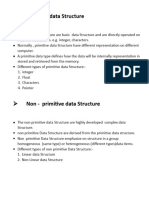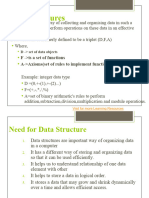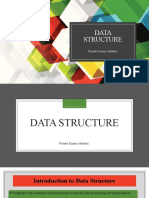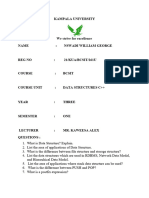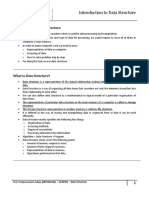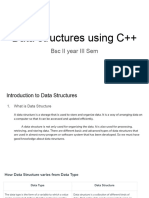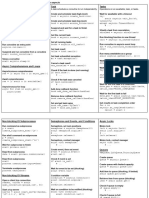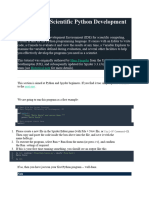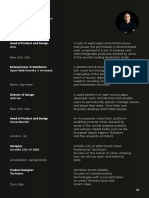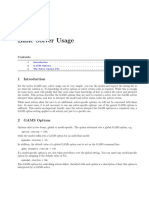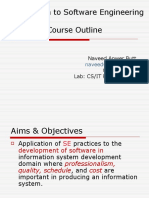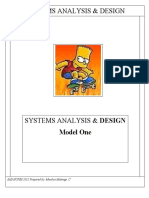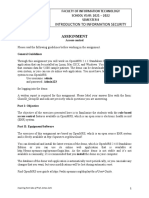0% found this document useful (0 votes)
13 views2 pagesData Structure
Data structures are organized ways of storing data, classified into primitive and non-primitive types. Primitive data structures include types like integer, float, boolean, and char, while non-primitive structures can hold multiple data types and are divided into linear (e.g., arrays, stacks, queues) and non-linear (e.g., trees, graphs) categories. Each type serves different purposes and has specific characteristics for data management.
Uploaded by
nehakashyap20298Copyright
© © All Rights Reserved
We take content rights seriously. If you suspect this is your content, claim it here.
Available Formats
Download as DOCX, PDF, TXT or read online on Scribd
0% found this document useful (0 votes)
13 views2 pagesData Structure
Data structures are organized ways of storing data, classified into primitive and non-primitive types. Primitive data structures include types like integer, float, boolean, and char, while non-primitive structures can hold multiple data types and are divided into linear (e.g., arrays, stacks, queues) and non-linear (e.g., trees, graphs) categories. Each type serves different purposes and has specific characteristics for data management.
Uploaded by
nehakashyap20298Copyright
© © All Rights Reserved
We take content rights seriously. If you suspect this is your content, claim it here.
Available Formats
Download as DOCX, PDF, TXT or read online on Scribd
/ 2

